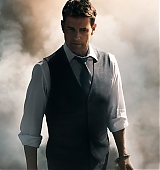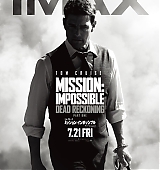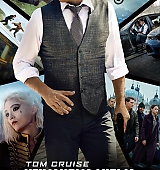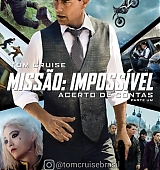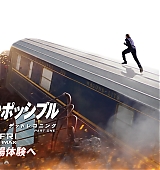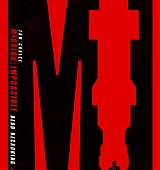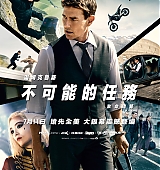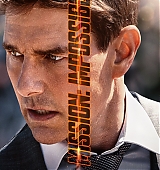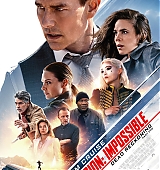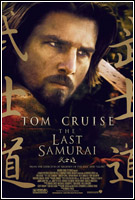 Director: Edward Zwick
Director: Edward ZwickWritter: Marshall Herskovitz, John Logan
Tom Plays: Nathan Algren
Status: ON DVD
Plot
An American military advisor embraces the Samurai culture he was hired to destroy after he is captured in battle.
Media:
Photos | Videos | Official Website
Goofs
Incorrectly regarded as goofs: The armor the samurai wear is from the mid- to late-Sengoku Jidai era in Japan, over 250 years before the Meiji Jidai era the film takes place in. However, this was deliberate. Costume creators were aware that at the time the movie takes place, no armor would have been worn. They chose to have them in armor to show that the band of samurai wanted to go back to old values and rejected modernity.
Factual errors: General Omura Masujiro who developed the Western-style army during the Meiji restoration was killed in 1869 by a conservative samurai, several years before the movie takes place.
Continuity: Nobutada’s blood around his mouth disappears and then reappears while talking to his father before his death.
Continuity: When Katsumoto is in the courtyard discussing poetry and perfect blossoms, he has a cut on his forehead from the ninja attack. He announces that they will be departing the next morning, but when we see him the next morning, the cut has completely healed.
Continuity: When the son is killed, a soldier turns the corner, and rips the wall with the butt of his gun. In the next shot, the wall is not ripped.
Continuity: When Nathan is illustrating the scalping procedure to Simon Graham, in one shot he is seen pressing the knife against Simon’s throat. In the very next shot the knife has moved away from his throat.
Continuity: When Taka is washing her hair and talks with Nathan, her hair is alternately in/out of her kimono between shots.
Factual errors: No one, especially a foreigner, would have been allowed in the Emperor’s presence bearing weapons, yet this happens on three occasions.
Incorrectly regarded as goofs: Although it is suggested that Algren should have worn the katana – that Katsumoto gave him – with the cutting edge upwards he is, in fact, correct to wear it with the cutting edge facing downwards in battle. Cutting edge upwards is for “everyday wear”, whereas cutting edge downwards is for battle.
Continuity: During the discussion about the scalping, Zebulon Gant’s hand jumps around in the background between holding the chair and holding up his glass so that he can sip from it.
Continuity: When Nathan walks into Taka’s house after his first round about town since his capture, Taka cleans up after him because he has walked in with muddy shoes. The shot before this showing him walking in the door clearly shows clean shoes.
Factual errors: When the samurai are entering the town, a photographer is seen with a large format camera. On the matte screen, the scene is depicted in sepia-tinted black and white. It should be in full color, as in every camera or camera obscura.
Continuity: During the final charge of the Samurai, Algren has his sword in a “stabbing” grip, ready to throw it. A few shots later, he has the sword in its regular position, flipping it to the throwing position again.
Anachronisms: The Meiji Emperor would not have been called by that name until after his death. Meiji was his “nengo”, or reign-name, and that name for Japanese emperors is only used after their death; e.g. the Emperor Hirohito is now known as the Showa Emperor, Meiji’s name was Mutsuhito, and he was referred to as Emperor Mutsuhito during his lifetime.
Continuity: After the final charge of the samurai there are several moments where the weather changes from sunny in wide shots to raining in close-ups.
Revealing mistakes: Obvious stunt double when Nathan falls off the horse in the final battle.
Continuity: When Katsumoto and Algren are riding to Tokyo, Algren is seen turning around his horse and starting to ride off. In the next shot, he is not moving and beings to ride off again.
Revealing mistakes: During the final battle when the samurai are lighting bales of hay on fire to cover their retreat, the fire spreads to the last two visible bales before the rider on horseback reaches them with his torch.
Errors in geography: There are no wild palm trees in Japan except in a few southern areas.
Revealing mistakes: Obvious rubber gun (top left of the screen) in the slow motion sequence during the final battle. Continuity: When the ninjas attack the samurai village, Algren is being pinned down by a ninja who is trying to force his head onto a blade. In the next shot, Algren throws off the ninja, but in the subsequent close-up, the ninja is back on his back and he throws him off again.
Plot holes: Algren finds the Hakama, Dogi, and Obi in his room, and then walks out of the room fully dressed. Wearing the Hakama and Dogi requires the tying of no fewer than four very complicated and precise knots. Yet, when we see Ahlgren emerge from the room, he looks perfect – there is no way he would know how to put on Japanese clothing.
Audio/visual unsynchronized: When Algren and Katsumoto are shown in slow motion, during the horseback charge, Algren draws his sword and we hear the sound of the sword ringing as it is drawn. The Saya (scabbard) of the Katana is typically made of wood, and though they sometimes had fittings made of metal around the Koiguchi (mouth of the scabbard) these were usually ornate, and there clearly are none on the sword that Algren has.
Audio/visual unsynchronized: The technique of drawing a katana and the material of scabbard (saya, made of wood) doesn’t generate such sound as it can be heard in the movie.
Continuity: When the ninja invade Katsumoto’s village, a ninja is shown quietly killing a samurai sentry by snapping his neck. Later, just before the final battle, the same samurai is ready for battle and staring the enemy army down.
Revealing mistakes: During the ninja attack in the house when Nathan and Katsumoto are fighting inside the house together. One of the first ninjas on the right hand of the screen that was injured or killed during the attack is seen rolling out of the way for the second group of ninjas to jump through the wall and attack.
Continuity: When Algren is rescuing Katsumoto from his “home in Tokyo”, one of the soldiers from the first group of soldiers that get a chance to fire has an arrow protruding from his back, with no ill effect, before the first arrows are loosed. It is clearly visible through the smoke from the guns.
Continuity: During the wooden sword fight in the rain, (after Nathan spars with one of the young boys), he gets a bloody nose from a blow to the face. In the very next shot, the blood is gone.
Continuity: During the wooden sword fight in the rain, (after Nathan spars with one of the young boys), in the first sequence, the sword is struck from his hand and flies away. As he stands up from the blow without moving to retrieve it, he has it in his hand again.
Factual errors: At the beginning of the film, the narrator talks of a “sword” which was dipped into the sea and the four islands of Japan were formed. This is factually incorrect; it was actually a jewelled spear, called Ame no houkou and is detailed in the Kojiki, the book of the Shinto faith.
Factual errors: Japan *did* seek military advisors in the latter half of the 1800s to form a modern Army. The only problem with this is that they didn’t consult the Americans to assist them. The most successful army at that point was the Prussian (not yet German) Army, whom they recruited for training purposes… as well as British naval attachés to assist in the creation of a modern fleet (which thoroughly embarrassed the Russians at the Battle of Tsushima in 1905 and established Japan as a fledgling world naval power).
Continuity: When Nathan is walking through town and is approached by the Shogun’s men, there is a close-up of him putting his hands at his sides. The very next shot has him lowering his hands again.
Factual errors: The first battle is in a forest which contains tall tree ferns. There are no tree ferns in Japan, only small ground cover type ferns.
Revealing mistakes: In the final battle sequence, one soldier takes an arrow directly in the face. But the actor’s hand is already held up to his face, palm inward, before the arrow arrives.
Errors made by characters (possibly deliberate errors by the filmmakers): At one point Algren says “spring 1977” instead of “spring 1877”. Later he says “winter 1977”.
Continuity: Tom’s thumb has a bruise on it when held captive, in the fall. In the spring, the bruise is still there. Most bruises disappear after a month.
Continuity: During the ninja fight when Katsumoto is at a stand off with two ninjas, one ninja has a sword and the other is holding two sai. In a close-up of the ninjas, both are holding swords, and then in the next shot of both ninjas, they have their original weapons again.
Anachronisms: There is a modern telephone pole in the village.
Continuity: When Nathan hands the wooden sword back to the boy in one shot, it is between his middle and ring fingers. In the next shot, he is holding it normally. He switches back and forth twice more.
Revealing mistakes: When Katsumoto, Algren and the rest of the Samurai are charging on horses towards Colonel Bagley and the infantry in the final battle. Katsumoto is shown with a bullet hole in his shoulder armor, moments later he is shot in the exact spot. The bullet hole was there before he was shot.
Quotes
Emperor Meiji: Tell me how he died.
Algren: I will tell you how he lived.Algren: There is Life in every breath…
Katsumoto: That is, Bushido.Algren: I will miss our conversations.
Katsumoto: And who was your general?
Algren: Don’t you have a rebellion to lead?
Katsumoto: People in your country do not like conversation?
Algren: He was a lieutenant colonel. His name was Custer.
Katsumoto: I know this name. He killed many warriors
Algren: Oh, yes. Many warriors.
Katsumoto: So he was a good general.
Algren: No. No, he wasn’t a good general. He was arrogant and foolhardy. And he got massacred because he took a single battalion against two thousand angry Indians.
Katsumoto: Two thousand Indians? How many men for Custer?
Algren: Two hundred and eleven.
Katsumoto: I like this General Custer.
Algren: He was a murderer who fell in love with his own legend. And his troopers died for it.
Katsumoto: I think this is a very good death.
Algren: Well, maybe you can have one just like it someday.Algren: I killed her husband?
Katsumoto: It was a good death.Katsumoto: You believe a man can change his destiny?
[Nobutada is shamed by Imperial Guards who cut off his top knot and take his swords, leaving him in a heap in the street] Algren: C’mon, I’ll take you home.
Algren: I think a man does what he can, until his destiny is revealed.
Nobutada: Jolly good.Algren: My thanks, on behalf of those who died in the name of better mechanical amusements and commercial opportunities.
Algren: You want me to kill Jappos, I’ll kill Jappos.
Colonel Bagley: I’m not asking you to kill anybody.
Algren: You want me to kill THE ENEMIES of Jappos, I’ll kill THE ENEMIES of Jappos… Rebs, or Sioux, or Cheyenne… For 500 bucks a month I’ll kill whoever you want. But keep one thing in mind: I’d happily kill you for free.Algren: I have been hired to suppress the rebellion of yet another tribal leader. Apparently, this is the only job for which I am suited. I am beset by the ironies of my life.
Algren: [shouting] What do you want from me?
Katsumoto: What do you want for yourself?Algren: I have questions.
Katsumoto: Questions come later.Silent Samurai: Algren-San.
[he rushes in front of Algren to protect him from being shot, and is consequently shot himself] Algren: Bob.Algren: Mr. Graham. Tell this man to fire at me.
Simon Graham: I beg your pardon?
Algren: Tell this man that if he does not shoot me, I will kill him.Algren: [shouting] What the hell am I doing here?
[‘Bob’ rushes up, about to draw his sword and kill Algren, but Katsumoto gestures for him to stop] Katsumoto: In spring the snows will melt and the passes will open. Until that time, you are here.Algren: Sergeant Gant, report to the rear and see to the disposition of the supply trains.
[Gant does not move, but continues loading his rifle] Algren: Sergeant Gant, did you hear my order?
Zebulon Gant: I did indeed, sir.
Algren: Good, then you will obey it. Now!
Zebulon Gant: No disrespect intended, sir, but shove it up your ass.Algren: How’s your poem coming?
Katsumoto: The end is proving difficult.Algren: This is Katsumoto’s sword. He would have wanted you to have it. He hoped with his dying breath that you would remember his ancestors who held it, and what they died for. May the strength of the Samurai always be with you.
Algren: Who sent those men to kill you? Was it the Emperor? Omura?
Katsumoto: If The Emperor wishes my death, he has but to ask.
Algren: So it was Omura.Algren: There was once a battle at a place called Thermopylae, where three hundred brave Greeks held off a Persian army of a million men… a million, you understand this number?
[about General Hasegawa] Algren: He fought with the Samurai?
Katsumoto: I understand this number.
Simon Graham: He IS Samurai.Simon Graham: You insolent, useless son of a peasant dog! How dare you show your sword in his presence! Do you know who this is?
[pointing to Algren] Simon Graham: This is the President of the United States of America! He is here to lead our armies in victorious battle against the rebels!
Guard: It is not my responsibility…
Simon Graham: Now get over there and help those men with their equipment!
Guard: [to his men] Carry the equipment.
[Algren and Graham go through] Algren: The President of the United States?
Simon Graham: Sorry. I think I may be sick.Zebulon Gant: [shouting loudly] Right, you little bastards! You will stand up straight or I will personally shit kick every far eastern buttock that appear before me eyes!
Algren: Well done, sergeant.
Zebulon Gant: When you understand the language, sir, everything falls into place.Algren: [narrating] They are an intriguing people. From the moment they wake they devote themselves to the perfection of whatever they pursue. I have never seem such discipline. I am surprised to learn that the word Samurai means, ‘to serve’, and that Katsumoto believes his rebellion to be in the service of the Emperor.
Algren: [narrating] Winter, 1877. What does it mean to be Samurai? To devote yourself utterly to a set of moral principles. To seek a stillness of your mind. And to master the way of the sword.
Algren: [narrating] Spring, 1877. This marks the longest I’ve stayed in one place since I left the farm at 17. There is so much here I will never understand. I’ve never been a church going man, and what I’ve seen on the field of battle has led me to question God’s purpose. But there is indeed something spiritual in this place. And though it may forever be obscure to me, I cannot but be aware of its power. I do know that it is here that I’ve known my first untroubled sleep in many years.
Algren: [Algren’s ‘conversations’ with the Silent Samurai] I know why you don’t talk. Because you’re angry. You’re angry because they make you wear a dress.
[Katsumoto hands a samurai sword to Algren, it has a message written on it] Algren: What does it say?
Algren: [later, after being beaten to the ground by Uijo] I just realized, I’ve been remiss. Forgive me, I forgot to thank you for protecting me yesterday. That is your job right? Protecting me. Well done ‘Bob.’ You don’t mind if I call you Bob, do you? I knew a Bob once; God, he was ugly as a mule. Are you a ladies man, Bob?
Katsumoto: “I belong to the warrior in whom the old ways have joined the new.” [Algren and Katsumoto ride up to Bagley, who sees that Algren has turned against him] Colonel Bagley: Good God… Sir, the Imperial Army of Japan demands your surrender. If you and your fellas lay down your arms, you will not be harmed.
Katsumoto: This is not possible, as Mr. Omura knows.
Colonel Bagley: Captain Algren. We will show you no quarter. You ride against us, and you’re the same as they are.
Algren: I’ll look for you on the field.Algren: What do you want?
Katsumoto: To know my enemy.
Algren: I’ve seen what you do to your enemies.
Katsumoto: The warriors in your country do not kill?
Algren: They don’t cut the heads off defeated, kneeling men.
Katsumoto: General Hasegawa asked me to help him end his life. A samurai cannot stand the shame of defeat. I was honored to cut off his head.Katsumoto: [Algren has just walked into Katsumoto’s house, after being beaten thoroughly by Uijo] Uijo is teaching you the way of the Japanese sword.
Algren: [Flatly] Yes indeed.Taka: Japanese men do not help with this
Algren: [grabs firewood basket] I am not JapaneseAlgren: Your highness… if you believe me to be your enemy, command me, and I will gladly take my life
Katsumoto: What happened to the warriors at Thermopylae?
Algren: Dead to the last man.Higen: Will you fight the white men, too?
[watching the Imperial Army’s target practice] Algren: I suppose we should be grateful they’re all firing in the same direction.
Algren: If they come here, yes.
Higen: Why?
Algren: Because they come to destroy what I have come to love.
Zebulon Gant: Couldn’t have put it better myself, sir.Katsumoto: You fought against your Red Indians?
Algren: Yes.
Katsumoto: Tell me of your part in this war.
Algren: Why?
Katsumoto: I wish to learn.
Algren: Read a book.
Katsumoto: I would rather have a good conversation.Katsumoto: The Emperor could not hear my words. His army will come. For nine hundred years, my ancestors have protected our people. Now… I have failed them.
Algren: So you will take your own life? In shame? Shame for a life of service? Discipline? Compassion?
Katsumoto: The way of the Samurai is not necessary anymore.
Algren: Necessary? What could be more necessary?
Katsumoto: I will die by the sword. My own, or my enemy’s.
Algren: Then let it be your enemy’s.Algren: What else has she told you?
Katsumoto: That you have nightmares.
Algren: Every soldier has nightmares.
Katsumoto: Only one who is ashamed of what he has done.
Algren: You have no idea what I have done.
Trivia
Tom Cruise took no “up front” salary for this film.
Tom Cruise narrowly escaped potentially fatal injuries after a sword was swung within one inch of his neck while filming. He and his co-star Hiroyuki Sanada were acting out a sword fight scene when the incident happened. Sanada swung a sword at Cruise who was on an off-camera mechanical horse at the time. But the machine reportedly malfunctioned and failed to duck at the right moment. Sanada stopped the blade just one inch from his neck.
This movie marks the 100th score for composer Hans Zimmer.
The Japanese character that the Taka’s younger son paints and gives to Algren is the character for “samurai”.
Learning how to use the sword, speak Japanese, among many other things, Tom Cruise spent two years preparing for this movie.
The kanji characters that appear on the posters, often beneath the title, do not say “The Last Samurai.” They say “bushido” (“the warrior Way,” i.e., Japanese chivalry).
Although the movie seems to imply that Japan’s new army was trained by the Americans, in fact, it was the Prussian General Staff that assisted in the modernization of Japan’s army.
The sword used in the film is the folded steel Orchid katana by Paul Chen.
Over 500 Japanese extras, trained for 10 days at the Clifton Rugby Grounds, in New Plymouth for the lead up to the filming.
First feature to use the new Kodak Vision2 500T 5218 film stock – the successor of the previous Vision 500T 5279. However, it was released later than Seabiscuit which uses the same film stock but at a later date.
The real-life counterpart to Katsumoto (played by ‘Ken Watanabe’ ) is Takamori Saigo, who led a samurai rebellion in 1877. As in the movie, Saigo ended up committing suicide in September 1877 after defeat in battle. The Emperor’s attitude in the film toward Katsumoto’s struggle and death reflects actual Japanese popular sentiment toward Saigo, who though defeated, was regarded as a hero; a statue of Saigo was erected shortly after his death, and can today be seen in Ueno, in northeast Tokyo.
When Taka starts to undress for Capt. Algren there is a shot with her clothes slightly below her shoulders looking backwards over her shoulder. This is a homage to the Hishikawa Moronobu’s ukiyo-e painting “backwards beauty”
Cruise’s character is loosely based on American mercenary soldier Frederick Townsend Ward, who was one of the leading figures in the Taiping Rebellion in China between 1851 and 1864. Cruise had been involved in a project by John Woo based on historian Caleb Carr’s novel “The Devil Soldier” which was specifically about Ward, however the project was abandoned in 1993.
